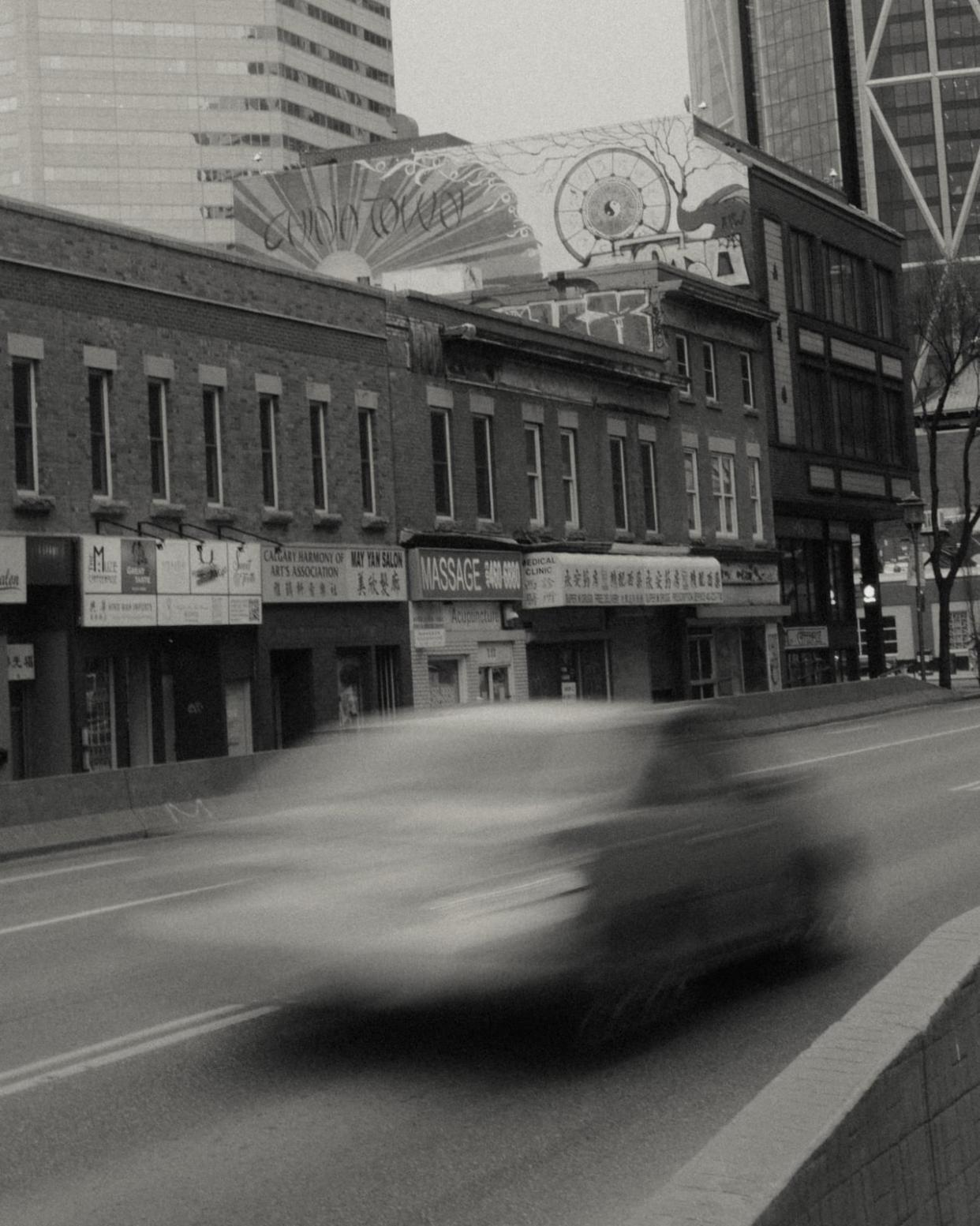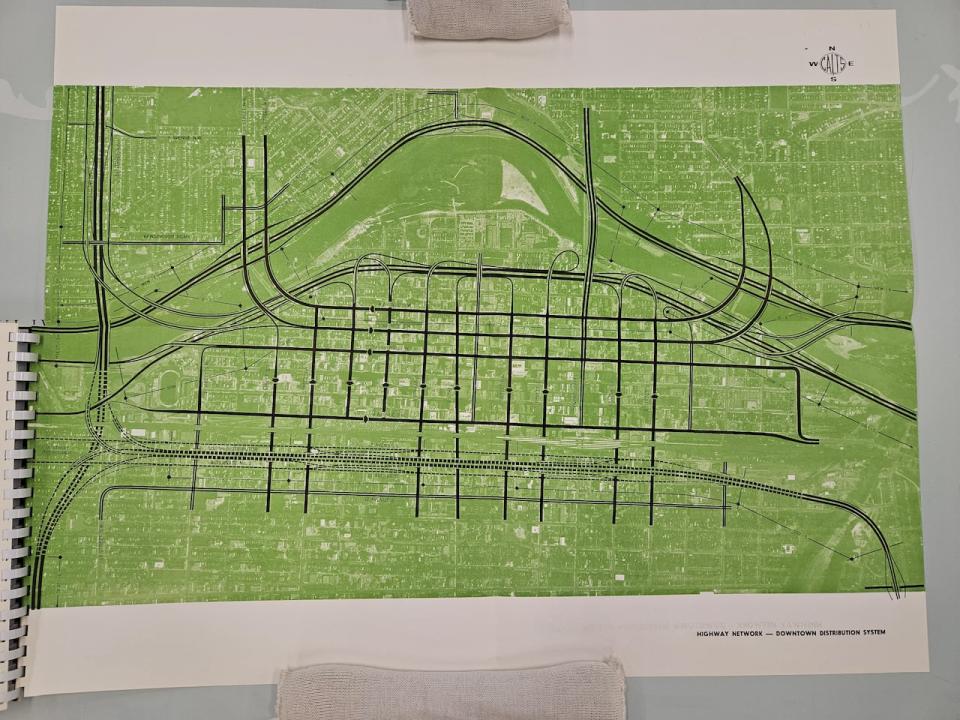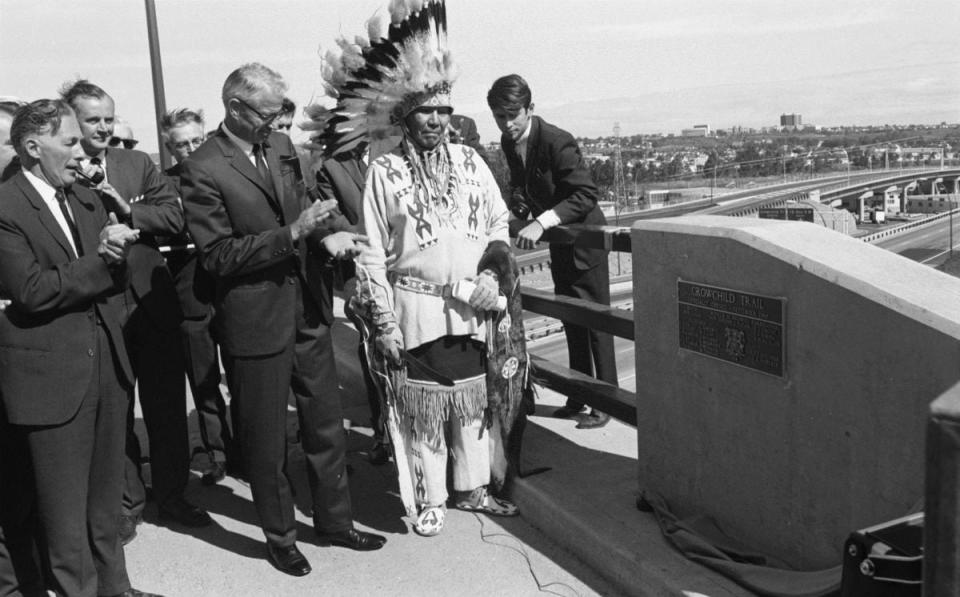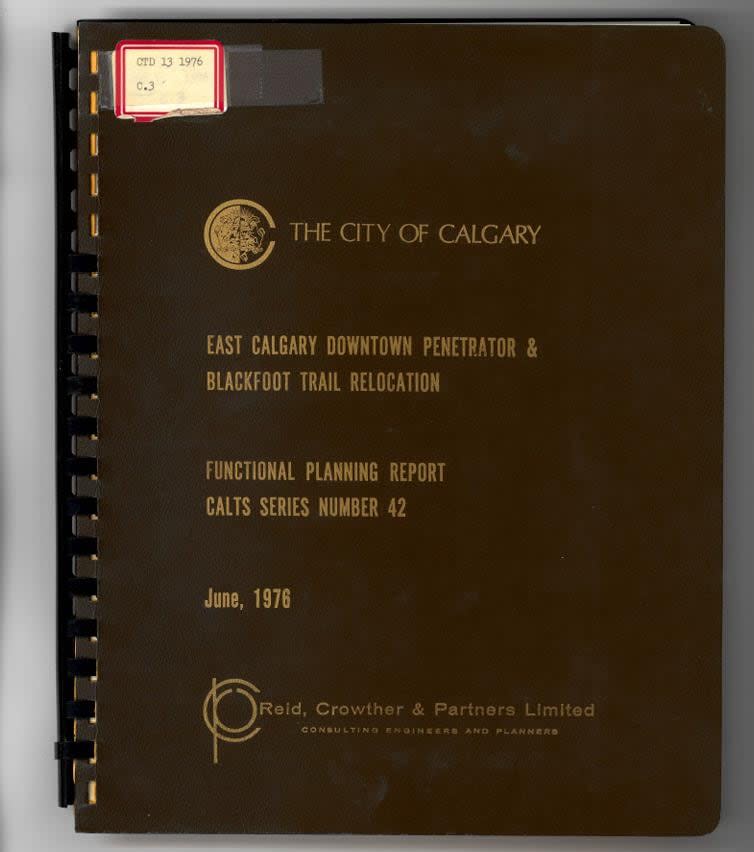That freeway once planned for downtown Calgary (with a name that hasn't aged particularly well)

You've probably had those moments, when idling nine cars behind a red light in rush-hour downtown Calgary, when you wished there was a smoother way into the core.
What if there was an eight-lane expressway, slicing right through?
What if it levelled most of Eau Claire and Chinatown?
And what if it had a terrible-sounding name?
Welcome to the mostly forgotten history of Calgary's "downtown penetrator." It's the subject of the latest edition of CBC's This is Calgary podcast, hosted by Anis Heydari.
This chapter of could-have-been lore comes to us from the 1960s, that age of big cars, big freeway projects and big-time awkward transportation planning jargon.
The city was growing rapidly, sprouting into new suburbs like Braeside, Brentwood, Mayland Heights and Westgate. Thousands more Skylarks, Mustangs and Oldsmobiles were racing to get downtown to work in the highrise offices of Calgary's budding oilpatch.
'Penetration point'
One city report, typical of the age, observed: "Inasmuch as many of the existing penetration routes into the downtown area are already operating at full-capacity conditions, significant improvements or additions to these routes will have to be made if predicted increases in vehicular flow are to be accommodated."
And here's that term again: "By employing these distribution facilities, trip-makers will be able to travel with a minimum of delay to the downtown penetration point closest to their ultimate downtown destination…."
The idea of a highway to, uh, penetrate downtown first came in the early 1960s, when Canadian Pacific Railways pitched moving its main train track away from Ninth Avenue along the south end of downtown, and relocating it to the Bow River's south shore.
Because, at the time, it was an unsightly former industrial zone, unused and unloved. At least riverside train tracks would put the river banks to good use, the argument went.
And why not throw in a downtown freeway?
A group called the Local Council of Women fought back against the project and in favour of riverside beautification. So did Councillor Jack Leslie on the male-dominated city council.
The city rejected CP Rail's bid in 1964. Leslie became mayor, and would create the river pathway system we cherish today.
But that same mayor and his city planners didn't drop the mega-roadway plans. Far from it.
In 1965, council got a proposal for a new penetrator highway, fitting between Second and Third Avenues downtown.
Yes, there were homes and businesses in Chinatown and Eau Claire standing in the way of all this motorist-friendly progress. But, a city report advised, many buildings were shabby and in "poor conditions."
The neighbourhoods' residents were "generally poor … the aged live lonely lives often in rooms without windows, and sleep in beds without sheets or blankets."
So, according to the urban planning groupthink of the day, Eau Claire and Chinatown were ripe for an "urban-renewal scheme." Translation: move the residents, demolish it all, and start over.
Blueprints for the project envisioned eight to nine lanes of asphalt and big, looping on-ramps and off-ramps.

A map of a proposed extension of Bow Trail through downtown. It would have levelled much of Eau Claire and Chinatown, and would have accompanied plans to replace Centre Street Bridge with a newer and larger structure. From Calgary Transportation Study (CALTS) Volume 2, January 1968. (City of Calgary Archives)
There would be new and expanded river crossings to replace the Centre Street Bridge, and the Langevin and Louise Bridges, too. Heritage, schmeritage. Sedans were waiting.
The project went by different names, "penetrator" not actually being one at the time. Crosstown Freeway. Downtown distributor. Bow Trail, extending from where it currently sits west of the core.
The residents of Chinatown didn't sit back and let this happen to them. The community had already been moved a couple times from where it originally stood down around the CP tracks that Chinese labourers had migrated here to help build.
Various Chinese groups and families banded together to form the Sien Lok Society. It advocated against another forced relocation by the expressway and new Centre Street Bridge.
Council killed the idea for the great downtown penetrator in 1971, after all that pushback and budget pressures — $49.2 million was a lot back then, though it wouldn't build a single highway interchange these days.
Instead of the expressway, Fourth and Fifth Avenues became a one-way road couplet to handle more traffic flow.
These same pre-disco-era plans for a giant downtown highway also proposed closing Seventh Avenue for a mass transit line and making Eighth a pedestrian-only street. Calgary got the C-Train road and Stephen Avenue Mall, but not the expressway that was supposed to go with it.
And Calgary wasn't the only city that fended off big downtown freeway projects in the 1960s, the decade that wiped out homes to turn 24th Street South into Crowchild Trail.

It was the age of Calgary highway expansions. Mayor Jack Leslie, would-be father of the downtown penetrator, helped dedicate Crowchild Trail with former Tsuut'ina chief David Crowchild in 1968. (Glenbow Archives)
Edmonton had proposed the Jasper Freeway to roar through its central river way. Toronto activists defeated plans for the Spadina Expressway, which threatened that city's Chinatown. In New York City, there was never a Lower Manhattan Expressway to wipe out much of Greenwich Village.
But the penetratin' dream in Calgary that fell in 1971 wasn't dead yet. In fact, it came back one year later, this time formally named the East Calgary Downtown Penetrator.
Calgary should more efficiently get motorists downtown from the booming populations in the city's northeast and eastern suburbs, planners reckoned. A six-lane highway that ripped through parts of Inglewood and Ramsay would provide sufficient penetration .

A report featuring plans for a highway formally known as The Penetrator, which threatened the destruction of parts of Inglewood and Ramsay. East Calgary Downtown Penetrator & Blackfoot Trail Relocation, Functional Planning Report, June 1976. (City of Calgary Archives)
"In city planning department technical jargon, the projected roadway is known as the East Calgary Downtown Penetrator because it is designed to allow penetration of the inner city area from the suburbs," a 1972 Calgary Herald article explained.
Residents in Inglewood and Ramsay fought against the demolition of dozens of homes. By 1976, they won.
"The rejection of the ECDP may therefore be a blessing in disguise — particularly if it signals a higher level of concern for the protection of inner-city communities from scarring and dismemberment by swaths of asphalt," an editorial in the Calgary Albertan newspaper stated.
That was the end of the penetrator. Except in parts of western Michigan, where locals still tell you to "take the penetrator" when they mean Interstate 194, owing to the same archaic planning jargon that gripped Calgary officials a half-century ago.
And as recently as 2005, Edmonton and the Alberta government reached something called the Highway Penetrator Agreement to set standards for major city roads that brought inbound traffic from Edmonton's ring road.
But Calgary's Eau Claire, Chinatown and eastern neighbourhoods never experienced death by expressway, and residents don't have to squirm every time they think of the name of a street they drive daily.


